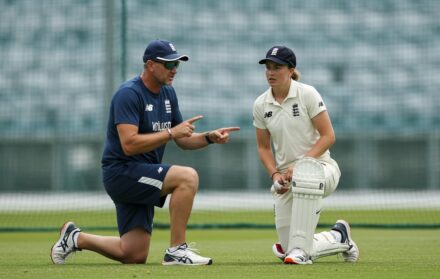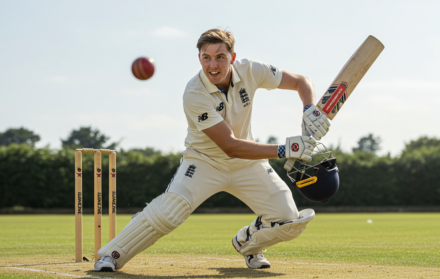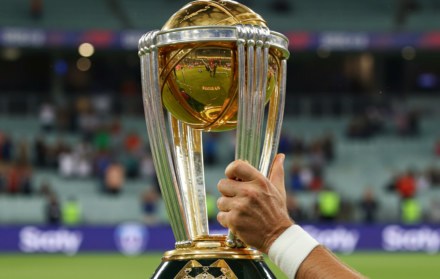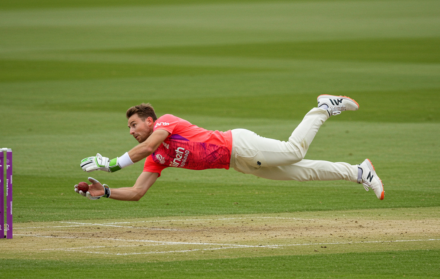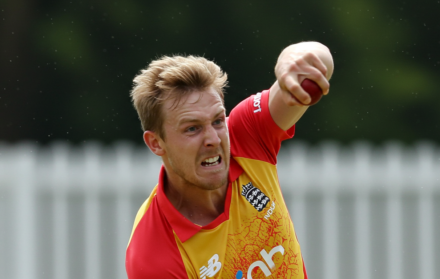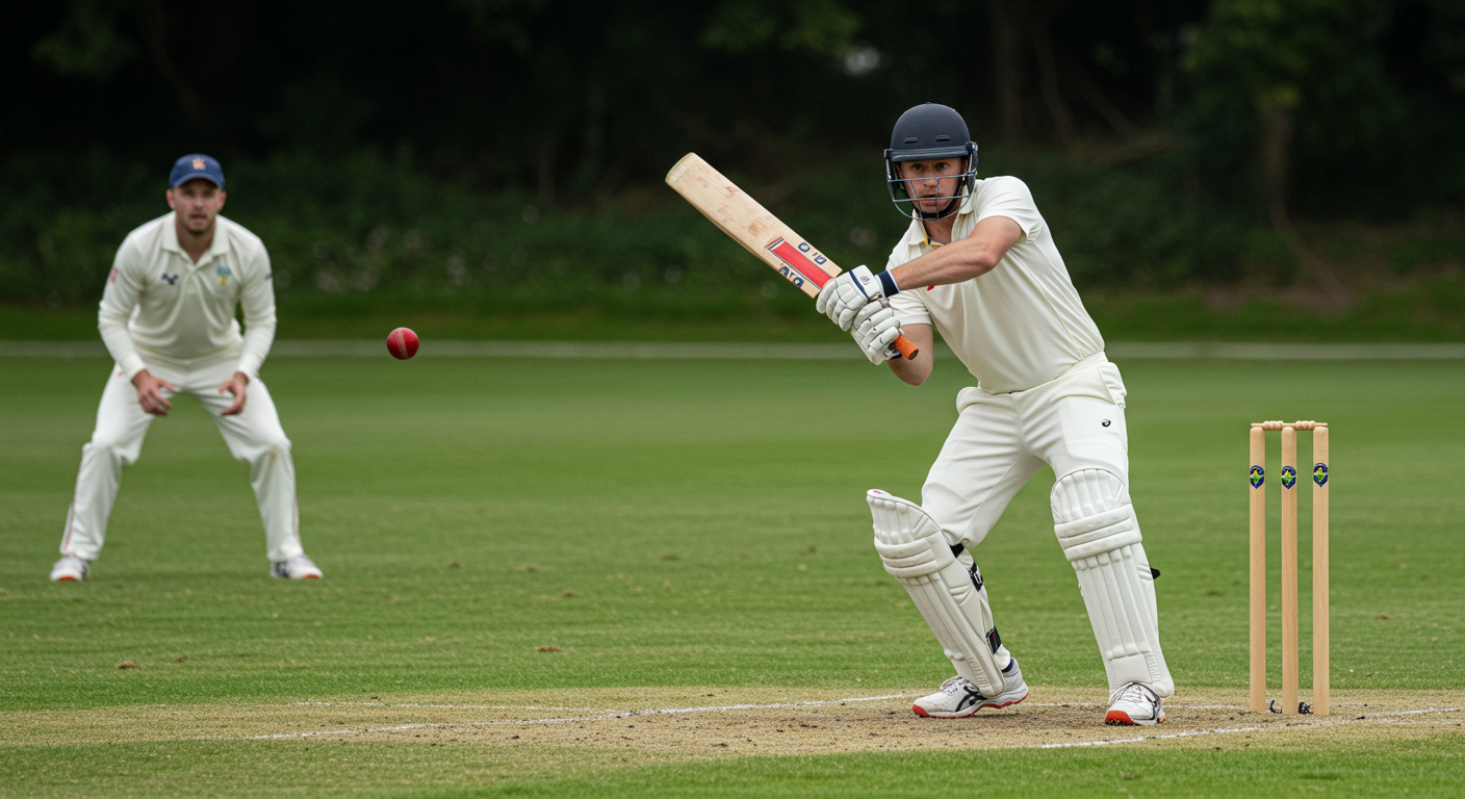
How is cricket played?
Cricket is one of the most popular sports in the world, played and followed by millions of people across many countries. From the bustling streets of India to the green fields of England, the game brings people together through its exciting and strategic play.
But for those new to the sport, a common question is: how is cricket played? This article will explain the basic rules and structure of the game in a simple and clear way. Cricket is played between two teams of eleven players. One team bats and tries to score runs, while the other team bowls and fields, trying to stop them and get them out. After a set number of overs or outs, the teams switch roles. The team with the most runs at the end wins.
Whether it’s a short match or a five-day test, cricket offers a fun mix of skill, teamwork, and tactics.
The Basic Objective of Cricket

At its core, cricket is a contest between bat and ball. Each team gets one or two chances (called innings) to bat and score runs, while the opposing team bowls and fields, trying to dismiss the batters and limit the score.
Each match follows a structured format, where:
-
One team bats while the other bowls and fields
-
Batting players aim to score as many runs as possible
-
Fielding team tries to get 10 players out to end the innings
-
After one innings is complete, the roles reverse
The team with the most runs at the end of the match wins. If both teams score the same number of runs, the match is a draw or a tie, depending on the format.
Understanding the Playing Field
Cricket is played on a large oval-shaped field. At the center of the field lies the cricket pitch, a 22-yard-long strip of flat, hard surface where most of the action takes place.
The Pitch
-
It is 22 yards (20.12 meters) long and 10 feet (3.05 meters) wide
-
At each end is a set of stumps with two bails balanced on top
-
These make up the wicket, a key target for bowlers
Key Markings
-
Crease: A line marked on each end of the pitch. Batters and bowlers must stay within certain areas to avoid penalties.
-
Boundary: The edge of the field, often marked with a rope. Hitting the ball past this line scores 4 or 6 runs, depending on how it crosses.
Fielding Positions
Fielders are placed around the pitch in strategic locations with names like:
-
Slip
-
Gully
-
Mid-off
-
Square leg
-
Fine leg
-
Point
Each position serves a tactical purpose, adjusted based on the batter’s strengths and the bowler’s approach.
Main Equipment Used in Cricket
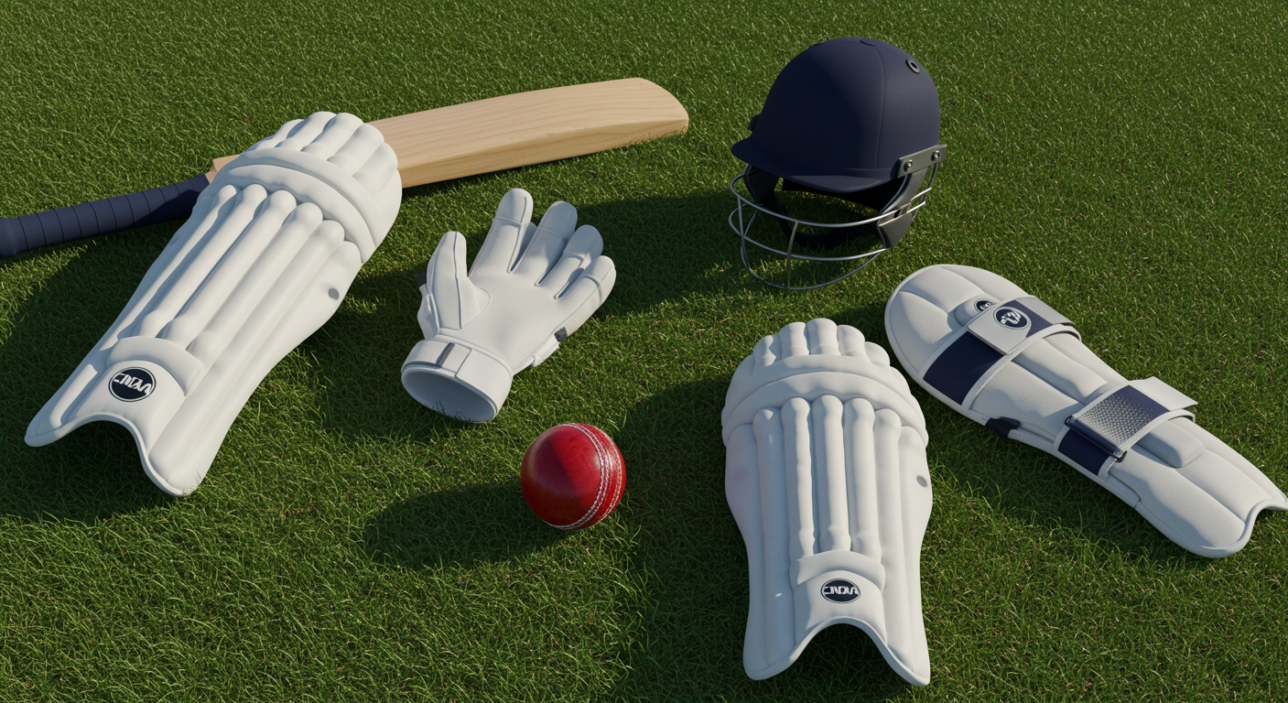
Cricket is a gear-intensive sport. Here’s a breakdown of the essential equipment used by players on the field.
Bat
-
Made of willow wood, usually English or Kashmir willow
-
Must not exceed 38 inches in length and 4.25 inches in width
-
The flat front is used to strike the ball
Ball
-
Hard, leather-covered sphere with a pronounced seam
-
Weighs between 155.9 and 163 grams
-
Comes in red (Tests), white (ODIs/T20s), or pink (day-night Tests)
Protective Gear
Because the ball can be bowled at speeds over 90 mph, players wear safety gear:
-
Pads: Worn on the legs to protect against fast deliveries
-
Gloves: For both batting and wicketkeeping
-
Helmet: Metal-caged protection for the head
-
Abdominal guard: Also known as a “box” for male players
-
Thigh pads, arm guards, chest guards (optional)
Clothing and Shoes
-
Light-colored kits for Test matches; team-colored kits for limited overs
-
Spiked shoes provide grip on turf pitches
Other Tools
-
Stumps and Bails: Three stumps form the wicket, with two small bails on top
-
Scoreboard: Displays total runs, wickets, overs, and player stats
Cricket Game Formats Explained
Cricket comes in several formats, each varying in duration, rules, and strategy. Here are the three main types:
Test Cricket
-
The longest form, played over five days
-
Each team gets two innings
-
Played with a red ball and traditional white kits
-
Matches can end in a win, loss, draw, or tie
Test cricket is considered the purest form of the game. It tests a player’s endurance, skill, and tactical ability over several sessions.
One Day Internationals (ODIs)
-
Each team plays one innings of 50 overs
-
Matches last around 7 to 8 hours
-
Played with a white ball under colored kits
-
Known for being fast-paced and high-scoring
ODIs blend endurance and aggression, making them a favorite for fans worldwide. The ICC Cricket World Cup is played in this format.
Twenty20 (T20)
-
The shortest international format: 20 overs per side
-
Games last about 3 hours
-
Emphasizes entertainment, big hits, and aggressive bowling
T20 cricket is responsible for a boom in global cricket audiences, with leagues like the Indian Premier League (IPL) attracting viewers and players from across the globe.
Batting and Scoring Runs
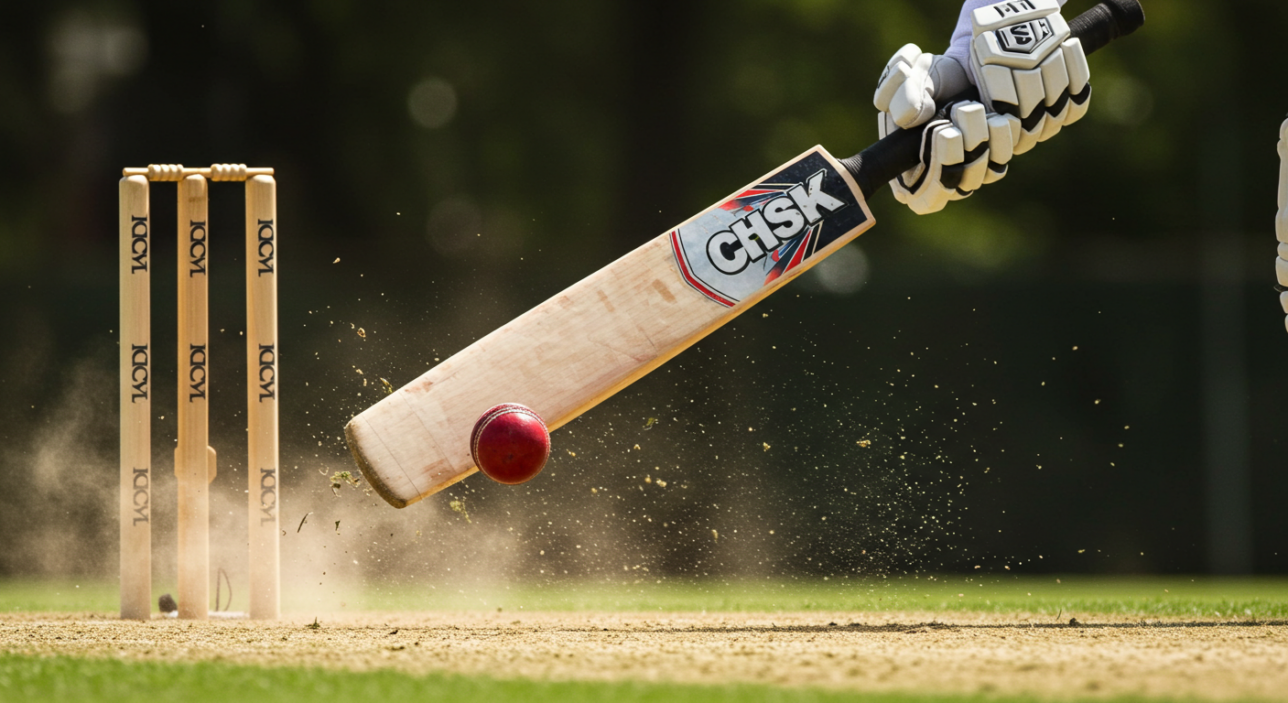
Batting in cricket is about more than just swinging the bat. It requires judgment, timing, and positioning.
How to Score
-
Running Between the Wickets: After hitting the ball, the two batters at either end of the pitch can run to exchange positions. Each completed run adds one point to the score.
-
Boundary (Four Runs): If the ball crosses the boundary after touching the ground, the batting team scores four runs.
-
Six Runs: If the ball crosses the boundary in the air without touching the ground, the batting team scores six runs.
How Batters Get Out
There are multiple ways a batter can be dismissed:
-
Bowled: The ball hits the stumps and dislodges the bails
-
Caught: Fielder catches the ball without it touching the ground
-
Leg Before Wicket (LBW): The batter blocks the ball with their leg when it would have hit the stumps
-
Run Out: The fielding team hits the stumps before the batter reaches the crease while running
-
Stumped: Wicketkeeper removes the bails while the batter is outside the crease
-
Hit Wicket: The batter accidentally hits the stumps with their body or bat
Some rare methods include handling the ball, obstructing the field, or timed out (failing to appear in time).
Bowling and Deliveries
Bowling is the act of delivering the ball toward the batter with the intention of either getting them out or restricting the number of runs scored. Each set of six legal deliveries is called an over.
Types of Bowlers
Bowlers fall into different categories based on their speed and technique:
-
Fast Bowlers: Rely on speed and bounce. Often exceed 140 km/h (87 mph).
-
Medium Pacers: Focus on movement and seam position rather than sheer pace.
-
Spin Bowlers: Deliver the ball slowly with wrist or finger motion to generate spin. Types include off-spin, leg-spin, left-arm orthodox, and chinaman.
Over Structure
-
Six legal balls make up an over.
-
If a bowler delivers an illegal ball (wide or no-ball), it does not count, and the batting team is awarded extra runs.
-
Bowlers alternate ends after each over.
-
No bowler can bowl two consecutive overs.
No-Balls and Wides
-
No-Ball: Occurs if the bowler oversteps the front crease, delivers a dangerous ball, or violates other technical rules. Batting team gets a free run and a free hit in limited overs formats.
-
Wide Ball: A ball too far from the batter’s reach. Awards an extra run and must be re-bowled.
Bowling Strategy
Captains often rotate bowlers based on match conditions, batter strengths, and desired field placements. Spinners may bowl when the ball is old and the pitch favors turn, while fast bowlers dominate early with a newer, harder ball.
Fielding and Player Roles
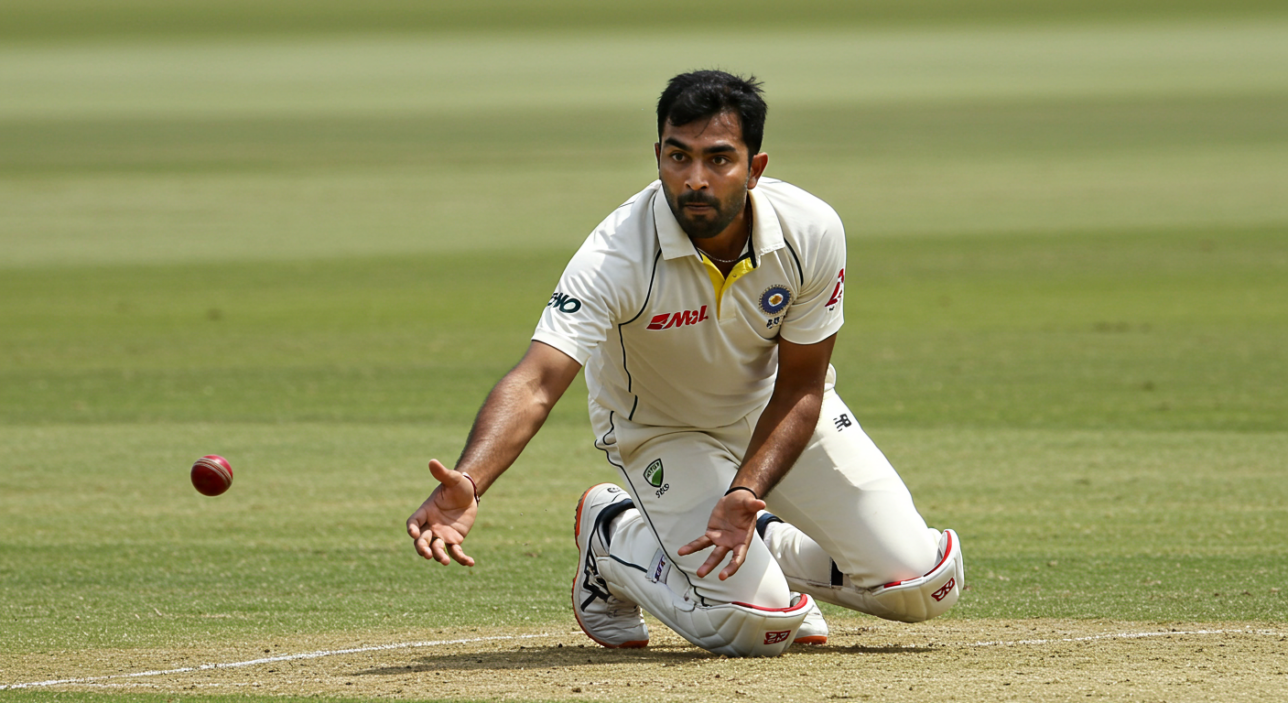
Cricket is a team sport that depends heavily on strategic field placement and specialized roles.
Fielding Positions
Each fielding position is given a unique name, some of which sound unusual to newcomers. Common positions include:
-
Slip: Stands behind the batter to catch edges.
-
Gully: Wide of slip, also ready for deflections.
-
Point: Positioned square on the off-side.
-
Mid-off / Mid-on: Close to the batter, responsible for stopping straight drives.
-
Square Leg / Fine Leg: On the leg side to field flicks and deflections.
These placements shift depending on the bowler, batter, and game plan.
Wicketkeeper
One of the most critical players on the field, the wicketkeeper stands behind the stumps. Their responsibilities include:
-
Catching edges and deliveries
-
Performing stumpings and run-outs
-
Providing strategic feedback to the captain
Wicketkeepers must have sharp reflexes and excellent hand-eye coordination.
Captain’s Role
The captain is the on-field strategist who:
-
Sets the field
-
Decides the bowling order
-
Makes decisions regarding batting order and reviews
-
Manages team morale and focus
Captains are crucial to managing momentum and decision-making during critical phases.
The Toss and Match Progression
Before the match begins, the two captains participate in a coin toss. The winner chooses whether to bat or bowl first, depending on pitch conditions, weather, and team strategy.
Match Flow
-
First Innings: One team bats while the other fields.
-
Innings Break: A short rest interval, with time limits in limited formats.
-
Second Innings: The other team bats and tries to chase or defend the target.
-
Result: Determined by who scores more runs. In rare cases, a match ends in a tie or draw.
In multi-day formats like Test cricket, each team gets two innings, and matches may last up to five days with scheduled breaks for lunch and tea.
Rules and Regulations
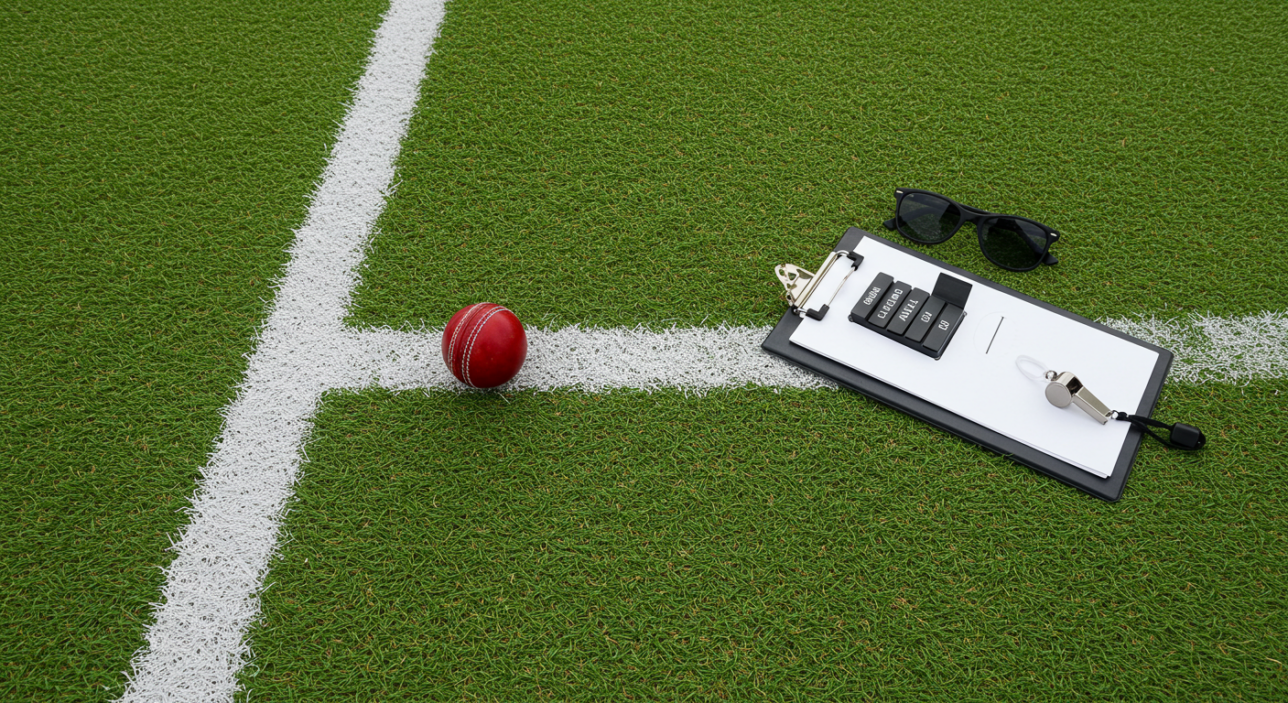
Cricket is governed by a detailed set of rules laid out by the Marylebone Cricket Club (MCC) and administered internationally by the International Cricket Council (ICC).
Umpires
Two on-field umpires manage the game by:
-
Making decisions on dismissals
-
Calling no-balls and wides
-
Monitoring fair play
A third umpire off the field assists using video replay for close calls, such as:
-
Run-outs
-
Catches
-
Stumpings
-
Boundary reviews
Decision Review System (DRS)
Teams are allowed to challenge on-field decisions using DRS. It includes:
-
Ball tracking: Predicts trajectory for LBW appeals
-
Snickometer / UltraEdge: Detects faint edges
-
Hot Spot: Shows heat from ball contact
Each team has a limited number of unsuccessful reviews per innings.
Match Interruptions
Matches can be delayed or shortened due to:
-
Rain or wet outfield
-
Bad light
-
Poor pitch conditions
Limited overs matches may have targets revised using the Duckworth-Lewis-Stern (DLS) method when interruptions occur.
Popular Cricket Nations and Culture
Cricket is played professionally in over 100 countries, but a few nations dominate the global scene in terms of success, infrastructure, and fanbase.
India
-
Home to the Board of Control for Cricket in India (BCCI), the richest board globally
-
Hosts the Indian Premier League (IPL), the most lucrative T20 league
-
Cricket is a national obsession, followed by billions
England
-
The birthplace of cricket
-
Hosts the Ashes series against Australia
-
Strong domestic structure with County Cricket
Australia
-
Dominant across all formats
-
Known for producing world-class fast bowlers and aggressive batters
-
Multiple-time World Cup winners
Pakistan
-
Known for their unpredictable but passionate cricket
-
Has produced legendary fast bowlers
-
The Pakistan Super League (PSL) is gaining global traction
South Africa
-
Known for all-rounders and athletic fielders
-
Strong performance record despite limited ICC trophies
Other Notable Nations
-
New Zealand: Consistent performers known for sportsmanship
-
Sri Lanka: World Cup winners and known for spin talent
-
Bangladesh: Rapidly improving in all formats
-
West Indies: Former world-beaters with flair, especially in T20s
-
Afghanistan: A rising force with world-class spinners
Cricket’s global footprint continues to expand with increased investments, youth programs, and leagues in emerging nations like the USA, UAE, and Ireland.
Final Thoughts: How Is Cricket Played?

Cricket is a game of skill, strategy, and stamina. Its layered structure allows people to enjoy the sport casually at the park or deeply as a fan of elite-level competition. Whether you are learning the rules or exploring national rivalries, cricket offers something for every kind of sports enthusiast.
From the grace of batting to the precision of bowling, and the energy of fielding to the tension of close finishes, the game remains one of the most engaging and emotionally rich sports in the world.
Frequently Asked Questions
1. How long does a cricket match last?
It depends on the format:
-
Test matches can last up to five days
-
ODIs typically take 7 to 8 hours
-
T20 games last around 3 hours
2. What is the difference between Test and T20 cricket?
Test cricket is a traditional, longer format emphasizing endurance and technique. T20 is a short, explosive version focused on big hits and fast results.
3. How many players are in a cricket team?
Each team has 11 players on the field at a time. Teams often include a mix of batters, bowlers, all-rounders, and a wicketkeeper.
4. What does LBW mean?
LBW stands for Leg Before Wicket. It means the batter’s leg or body blocked a delivery that would have hit the stumps, under certain conditions.
5. Can a cricket match end in a draw?
Yes, Test matches can end in a draw if the allotted time runs out before a result is reached. Limited overs matches may end in a tie or a win/loss based on runs.
